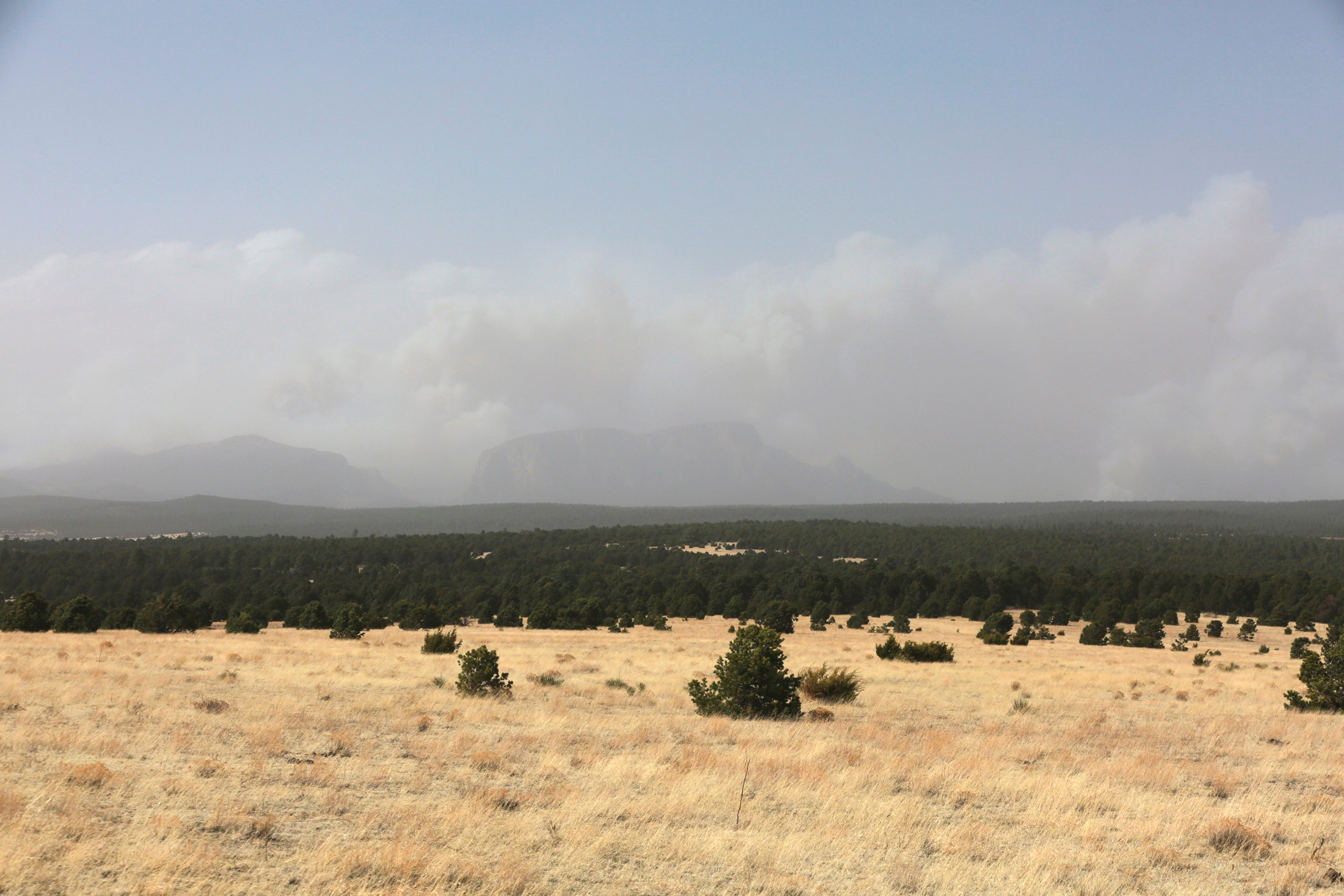Satellite captures wildfires raging outside Santa Fe as New Mexico declares emergency
Imagery showed sizeable blazes in the Santa Fe National Forest, trailing massive smoke clouds
Your support helps us to tell the story
From reproductive rights to climate change to Big Tech, The Independent is on the ground when the story is developing. Whether it's investigating the financials of Elon Musk's pro-Trump PAC or producing our latest documentary, 'The A Word', which shines a light on the American women fighting for reproductive rights, we know how important it is to parse out the facts from the messaging.
At such a critical moment in US history, we need reporters on the ground. Your donation allows us to keep sending journalists to speak to both sides of the story.
The Independent is trusted by Americans across the entire political spectrum. And unlike many other quality news outlets, we choose not to lock Americans out of our reporting and analysis with paywalls. We believe quality journalism should be available to everyone, paid for by those who can afford it.
Your support makes all the difference.New Mexico is under a state of emergency after more than a dozen wildfires were reported over the weekend, including near the cities of Santa Fe and Albuquerque.
Satellite imagery on Monday showed sizeable blazes in the Santa Fe National Forest, trailing massive smoke clouds.
On Saturday, that forest fire, named the Calf Canyon Fire, had merged with the Hermits Peak Fire, The Associated Press reported, burning across 84 square miles. By Monday, the fires were 12 per cent contained, according to InciWeb, a government fire database, with the fire expected to grow over the day.
AP reported that 20 wildfires in total were burning across the state this weekend.
New Mexico Governor Michelle Lujan Grisham declared a state of emergency on Friday in four counties in response to the fires.
Northeast of the Calf Canyon and Hermits Peak fires, the Cooks Peak Fire had covered over 80 square miles, and had just 9 per cent containment, though the area received a layer of snow overnight into Monday.
Smaller fires also raged over the weekend, including the Cerro Pelado Fire, north of Albuquerque. By Sunday that had grown to around 18 square miles, with 0 per cent containment.

Mandatory evacuation orders were in place for multiple communities across the state by Sunday. According to AP, Governor Lujan Grisham said that more than 200 structures had been burned, with nearly 1,000 more in potential danger. Officials have yet to fully assess the extent of the damage.
Two weeks ago, New Mexico officials reported that two people had died in the McBride Fire in southern New Mexico, near Alamogordo.
Last week, the Tunnel Fire in neighbouring Arizona spread to over 30 square miles outside of Flagstaff, prompting evacuations. The 2022 wildfire season in the US Southwest, which normally peaks from May to July, has gotten off to an early start.
And in southern Nebraska, in the country’s central plains, the Road 702 Fire had burned through 64 square miles by Monday. One person, a retired fire chief has died, and 15 other firefighters have been injured in that blaze, according to AP.
As of 22 April, over 1,300 square miles have burned in wildfires across the country, according to the National Interagency Fire Center, the highest number since 2018, and higher than the ten-year of average.
Wildfires around the world are expected to increase in both frequency and intensity as the climate crisis deepens, according to a recent UN report.
The American Southwest, already an arid environment, has faced extended drought conditions for over twenty years — helping to spur prime fire conditions. Further climate crisis is likely to exacerbate both aridity and higher temperatures in the region.
Currently, 65 per cent of New Mexico is in “extreme drought” conditions, according to the federal government’s drought monitor.
At the Calf Canyon and Hermits Peak fires, though high humidity is thought to be suppressing the fire to a degree, InciWeb reports that “fuels are fully available due to lack of winter precipitation and unseasonably warm, dry, windy conditions.”




Join our commenting forum
Join thought-provoking conversations, follow other Independent readers and see their replies
Comments